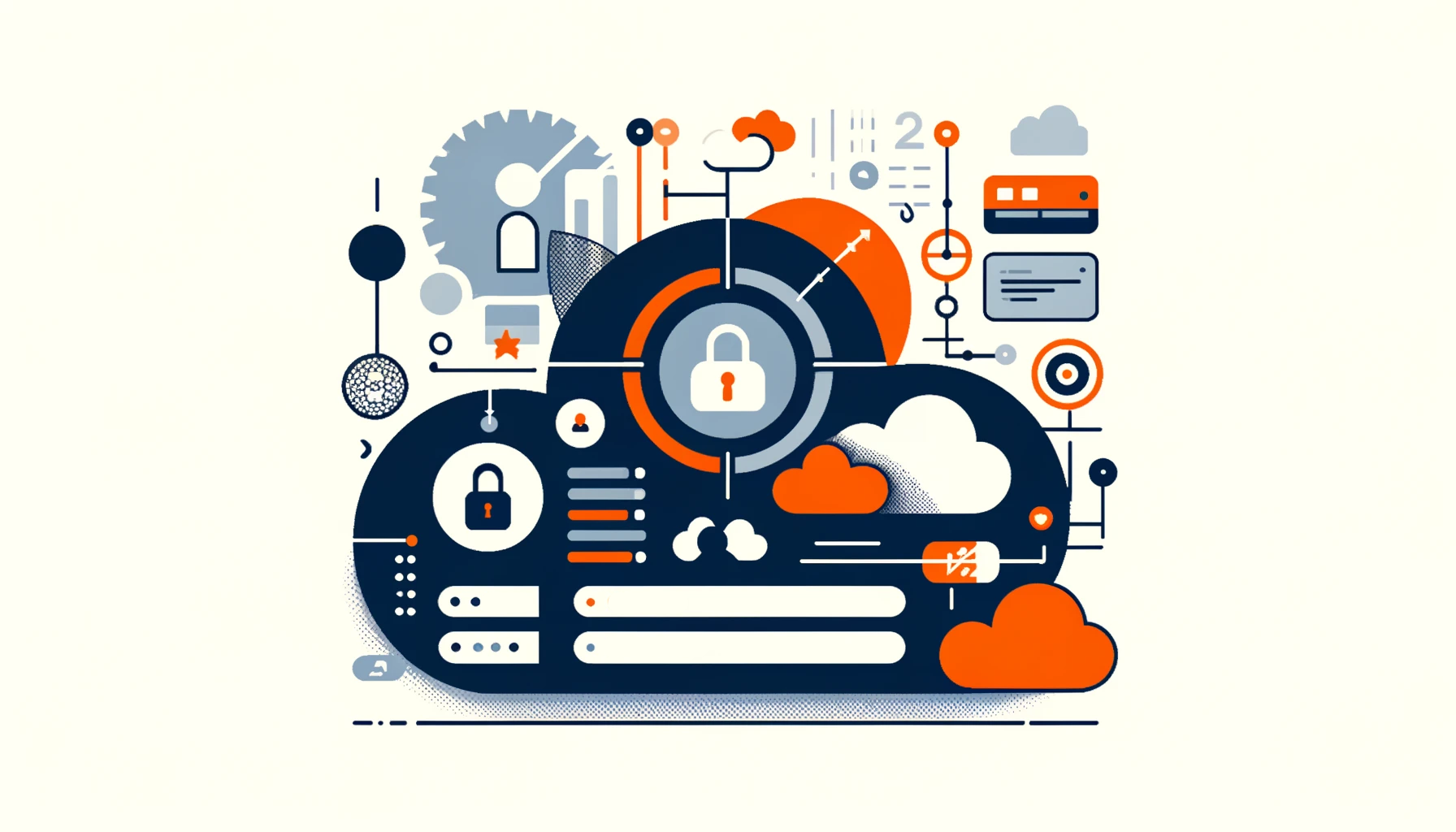
Snowflake SSO

Introduction
In today’s data-driven landscape, organizations are increasingly moving their analytics workloads to the cloud. As a leading cloud data platform, Snowflake offers robust security features, including single sign-on (SSO) capabilities. Snowflake SSO helps companies handle user authentication through identity providers (IdPs) using the SAML standard. This article discusses the basics of Snowflake SSO, its advantages, and how it works with different identity providers and systems.
Understanding SSO and SAML
Single sign-on (SSO) lets users use one login for many apps. By eliminating the need for separate logins, SSO simplifies access management for IT teams and enhances the user experience.
SAML is a standard that facilitates the sharing of authentication and authorization data. It does this between an identity provider and a service provider. SAML shares the data through the use of XML-based assertions.
Snowflake SSO with SAML
In Snowflake SSO, Snowflake is the service provider and relies on an external IdP that uses SAML 2.0 for user authentication. The IdP confirms the user’s identity to Snowflake with a SAML assertion. Snowflake then allows access based on the user’s roles and privileges in the platform.
What is SAML?
SAML (Security Assertion Markup Language) is a standard used to share login and access information between different parties. For example, a company can use SAML to verify identity, while a website can use it to provide a service. SAML allows users to log in once and access multiple apps or services with just one set of credentials.
SAML is an XML-based framework that defines a set of rules and formats for exchanging security information. It consists of three main components:
- Assertions: SAML assertions are statements made by the IdP about a user’s identity, attributes, and/or permissions. These assertions are typically encoded in XML format and digitally signed by the IdP.
- Protocol: The SAML protocol establishes a series of inquiry-reply messages that facilitate interaction between the IdP and SP. These messages include authentication requests, logout requests, and artifact resolution requests.
- Bindings: SAML bindings show how SAML protocol messages are sent using different communication methods, such as HTTP POST, HTTP Redirect, or SOAP.
SAML Specification
There is a formal specification for SAML. The latest version is SAML 2.0, approved by the OASIS Technical Committee in 2005. SAML 2.0 specification divides into several parts.
- Core: Defines the syntax and semantics of SAML assertions and protocols.
- Bindings: Specifies how SAML protocol messages are mapped onto standard messaging or communication protocols, such as HTTP or SOAP.
- Profiles: Describes how SAML assertions, protocols, and bindings are combined to support specific use cases, such as Web Browser SSO or Single Logout.
- Metadata: Defines a schema for describing SAML entities (IdPs and SPs) and their configuration information.
- Conformance: Specifies the conformance requirements for SAML implementations.
You can find the SAML 2.0 specification documents on the OASIS website.
These specifications offer detailed technical information on SAML for developers and implementers working with SAML-based systems.
SAML is a widely used standard for Single Sign-On (SSO). However, there are other options available, such as OpenID Connect and OAuth 2.0. These alternatives are gaining popularity, especially for web applications and APIs.
Setting Up in Snowflake
Setting up Snowflake SSO involves configuring the IdP, such as Okta, Azure AD, or ADFS, to establish trust with Snowflake. This process includes creating a SAML application in the IdP, providing Snowflake with the necessary SAML metadata, and configuring Snowflake to recognize the IdP as a trusted identity provider. Once the integration is complete, users can seamlessly authenticate into Snowflake using their IdP credentials.
How certificates are used in SSO
SSO workflow is as follows:
1. User Authentication
The user attempts to access a service provider (SP), such as Snowflake, that requires authentication.
- The SP redirects the user to the identity provider (IdP) for authentication.
- After that, the user enters their credentials (e.g., username and password) on the IdP’s login page.
- The IdP verifies the user’s credentials against its user directory.
2. Token Generation
- Upon successful authentication, the IdP generates a token (e.g., SAML assertion) that contains information about the user’s identity and attributes.
- The IdP digitally signs the token using its private key to ensure the token’s integrity and authenticity.
3. Exchange
- Next, the IdP sends the signed token back to the user’s browser.
- The user’s browser forwards the token to the SP.
4. Verification
- Now, the SP receives the token and verifies its digital signature using the IdP’s public key.
- The public key from the IdP’s certificate, usually shared when setting up SSO integration.
- If the signature is valid, the SP trusts the information contained in the token.
5. User Access
- Based on the user’s identity and attributes provided in the token, the SP grants access to the user.
The user can now access the SP’s resources without the need to re-enter their credentials.
The Role of Certificates in SSO
Certificates are important for building trust between the identity provider and service provider in a single sign-on setup. Here’s why certificates are necessary:
1. Authentication
The IdP’s certificate has the IdP’s public key. The SP uses it to check the digital signature of the tokens made by the IdP. This ensures that the tokens remain genuine.
2. Encryption
Some SSO protocols, like SAML, encrypt the communication between the IdP and SP using the IdP’s public key from the certificate. This protects sensitive information exchanged during the SSO process.
3. Trust Establishment
The certificate acts as a trust anchor, allowing the SP to verify the identity of the IdP. The certificate is typically issued by a trusted third-party certificate authority (CA) or can be self-signed by the IdP.
4. Secure Communication
Certificates enable secure communication channels. Transport layer security works as HTTPS, between the IdP and SP, preventing unauthorized access or eavesdropping on the exchanged data.
In simple terms, SSO allows users to use one set of login details for multiple services. This makes it easier for users to log in. They don’t have to remember different login information for each service. Instead, they can use the same credentials across various platforms.
Certificates are essential in SSO to establish trust between the identity provider and service provider, ensure the integrity and confidentiality of exchanged tokens, and facilitate secure communication throughout the authentication process.
When configuring SAML SSO, the IdP typically provides its X.509 certificate to the SP. The certificate is usually in PEM (Privacy-Enhanced Mail) format, which is a base64-encoded representation of the certificate data. The SP administrator then includes the saml2_x509_cert parameter in the SP’s SAML configuration, often by copying and pasting the PEM-encoded certificate value.
Identity Providers and SSO
Okta is often used for Snowflake SSO. Other identity providers like Azure AD, ADFS, OneLogin, and Ping Identity also support SAML authentication. Each IdP offers its own set of features and integration capabilities, allowing organizations to choose the best fit for their existing identity management infrastructure.
SSO in Other Systems and Fields
Beyond Snowflake, SSO has widespread adoption across various systems and industries. Some examples include:
- Cloud Platforms: Big cloud companies such as AWS, Google Cloud, and Microsoft Azure provide Single Sign-On (SSO) for their services. This feature allows users to easily manage access to cloud resources from a centralized location. SSO simplifies the process of accessing multiple cloud services by eliminating the need to log in separately to each one. This centralized approach enhances security and streamlines user experience.
- SaaS Applications: Some SaaS apps like Salesforce, Workday, and Slack use SSO to make it easier for users to log in.
- Enterprise Systems: SSO usually participates in corporations to safeguard access to in-house applications, data repositories, and network assets. This makes it simpler to handle multiple logins.
- Education: Schools use Single Sign-On (SSO) to help students and teachers access online tools more easily. These tools include learning systems, portals, and databases. SSO improves the overall experience for users.
Benefits of Snowflake SSO
Implementing Snowflake SSO offers several key benefits:
- Enhanced Security: SSO reduces the risk of weak passwords by relying on the IdP’s strong authentication mechanisms, such as multi-factor authentication (MFA).
- Simplified Access Management: With SSO, IT teams can centrally manage user identities and access permissions, streamlining user provisioning and deprovisioning processes.
- Improved User Experience: Users can access Snowflake seamlessly without remembering separate credentials, leading to increased productivity and satisfaction.
- Compliance and Auditing: SSO integrations often provide detailed logging and auditing capabilities, helping organizations meet compliance requirements and monitor access activities.
Conclusion
Snowflake SSO with SAML provides a secure and efficient way to authenticate users and control access to sensitive data. By leveraging identity providers like Okta, Azure AD, or ADFS, organizations can centrally manage user identities while benefiting from Snowflake’s powerful data platform capabilities. Implementing SSO not only enhances security but also simplifies access management and improves the overall user experience.
As data security remains a top priority, exploring comprehensive security solutions becomes crucial. DataSunrise, with its user-friendly and flexible tools for database security, data masking, and compliance, can help organizations strengthen their data protection strategies. Visit DataSunrise for an online demo to see how we can help protect your sensitive data in Snowflake and beyond.
